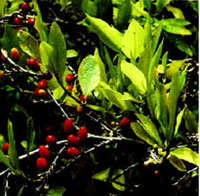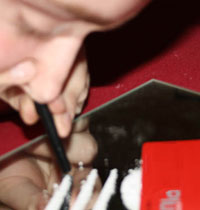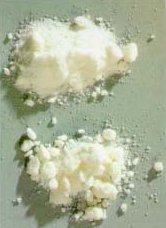|
When the white man dares to try the coca leaf, it will have the opposite effect that it has on you.
The juice that is strength and life for you will become a disgusting, degrading vice for your masters; while for you, the Indians, it is a spiritual food, for them it will cause craziness and stupidity.
Legend of coca.
|
 In 1859, Albert Niemann, from the University of Göttingen, isolated one of the 13 alkaloids in this millennial leaf: cocaine. Thanks to this component, a dentist could pull a patient's molar without subjecting him to torturous situations.
In 1859, Albert Niemann, from the University of Göttingen, isolated one of the 13 alkaloids in this millennial leaf: cocaine. Thanks to this component, a dentist could pull a patient's molar without subjecting him to torturous situations.
Later, Karl Koller, an associate and friend of Sigmund Freud, utilized the anesthetic properties of this substance for eye surgeries.
In 1923, Richard Willstatter, from Munich University, created the first synthetic cocaine based on an alkaloid contained in the coca leaf: procaine. Besides having the anesthetic effect of cocaine, this molecule also had psycho-stimulant properties.
Along with the boom in the use of cocaine as a local anesthetic, the cocaine molecule entered a new stage where the individual who used it became a "hero" and ended up being a "villain."
Effects
 Cocaine and its derivatives (cocaine and procaine) act as over-stimulants on the central nervous system, causing re-absorption of dopamine (neurotransmitter of pleasure and movement).
Cocaine and its derivatives (cocaine and procaine) act as over-stimulants on the central nervous system, causing re-absorption of dopamine (neurotransmitter of pleasure and movement).
Inhaling cocaine causes a feeling of satisfaction, euphoria, pleasure, mental acceleration, hyperactivity, eloquence, ability to socialize, etc. in the short term. After using this stimulant, abstaining causes a strong feeling of desolation, fatigue, depression, pain, isolation, bad humor, apathy, etc.
The faster the drug is absorbed, the shorter the euphoric effect and satisfaction (maximum 30 minutes). Tolerance becomes greater with more frequent cocaine consumption, which shortens the pleasure effect and increases the level of dependence (it is a highly addictive drug).
 The process of extracting the alkaloid first involves obtaining the cocaine paste known as "pitillo" or "bazuco" in eastern Bolivia. This drug is taken in through the lungs by smoking and is very popular among the lower class youth of the United States and Latin America because it is inexpensive and much more harmful than crystal cocaine (cocaine for sniffing).
The process of extracting the alkaloid first involves obtaining the cocaine paste known as "pitillo" or "bazuco" in eastern Bolivia. This drug is taken in through the lungs by smoking and is very popular among the lower class youth of the United States and Latin America because it is inexpensive and much more harmful than crystal cocaine (cocaine for sniffing).
Cocaine use considerably increases the risk of death due to heart failure or poisoning; it attacks the nervous system, increases blood pressure and body temperature, dilates the pupils, destroys the nasal septum, causes nerve cell damage, etc.
There are various ways to treat cocaine addiction: electrodes, abstinence, therapeutic support, abstinence with antidepressant drug therapy, prescribing neurotransmitter-creating chemicals like L-dopa, etc. However, rehabilitation depends on each person's will power. Therefore, it can be stated that the longer the drug has been used, the more difficult is the recovery.
More information: La Paz Coca Museum


